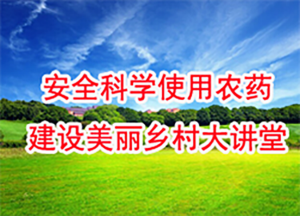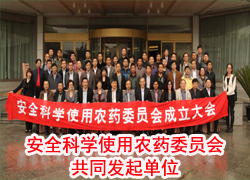
Chinese Pesticide Industry Expects Growth Glufosinate Sector
責(zé)任編輯:Fang Lin 來源:Chemlinked 日期:2015-01-30
According to statistics from the China National Agricultural Technology Extension and Service Center (NATESC), weed growth in China has increased significantly rising from 74 million hectares in 2000 to 97.34 million hectares in 2013. The increase in weed growth is compounded by an increase in herbicide resistance. The termination of paraquat AS*(aqueous solution) has left a considerable gap in the market and it appears that Glufosinate offers the most economically viable alternative to paraquat. The number of glufosinate registration has significantly increased in recent years. As a green alternative to paraquat, glufosinate has also proven itself to be a more efficient herbicide than glyphosate.
The senior agronomist from China’s NATESC expects the glufosinate market to grow significantly due to its environmentally friendly chemical profile, its cost and its efficiency in addition to the following reasons:
Improvements in farming methods and increased technological input have meant that the face of farming in China is currently undergoing a drastic change. In China there is a movement away from smaller farms towards larger corporate farming organizations. Generally speaking these farming methods rely heavily on chemical inputs and high throughput technologies and as such chemical herbicides such as glufosinate will be an important foundation in China’s agricultural system. In line with this, rising labor costs are also making Chinese farms increasingly reliant on chemical herbicides;
China banned the use of 10% glyphosate AS* and issued Announcement 1745 in 2012, requiring that the production of paraquat AS* should be suspended as of 1 July 2014 and all uses of paraquat AS* should be terminated by 1 July 2016. Although some new paraquat formulations have been developed by several indigenous producers, these products are characterized by high production costs or pose significant environmental risks. Furthermore, the MoA believe that the restriction on paraquat AS* is not enough to eliminate the health and environmental problems posed by paraquat and further paraquat sanctions are likely to follow. Paraquat AS* consumption is as much as 40,000 tons per year and this market niche is likely to be replaced by glufosinate;
Glufosinate was developed in the 1980s and initially registered in Japan. Currently, the herbicide is registered in over 80 countries and used on over one different hundred crops. The herbicide is sold in Japan, Korea, United States, Canada and EU regions. Glufosinate usage in Southeast Asia and some developed African countries has risen in recent years. In China, the technical material was first registered in 2004. By the end of November 2014, over 60 companies have obtained nearly one hundred registrations certificates. It is also remarkable that over 66% of new registrations were obtained in the last two years. Some producer has even developed a new generation of glufosinate, namely glufosinate-p. Currently, Meiji Seika Kaisha Ltd holds two temporary registrations for glufosinate-p, the 90% TC and the 10% SL respectively.
中國農(nóng)藥工業(yè)網(wǎng) 版權(quán)所有
地址:北京市朝陽區(qū)農(nóng)展館南里通廣大廈7層
電話:010-84885233 京公網(wǎng)安備11010502025163










